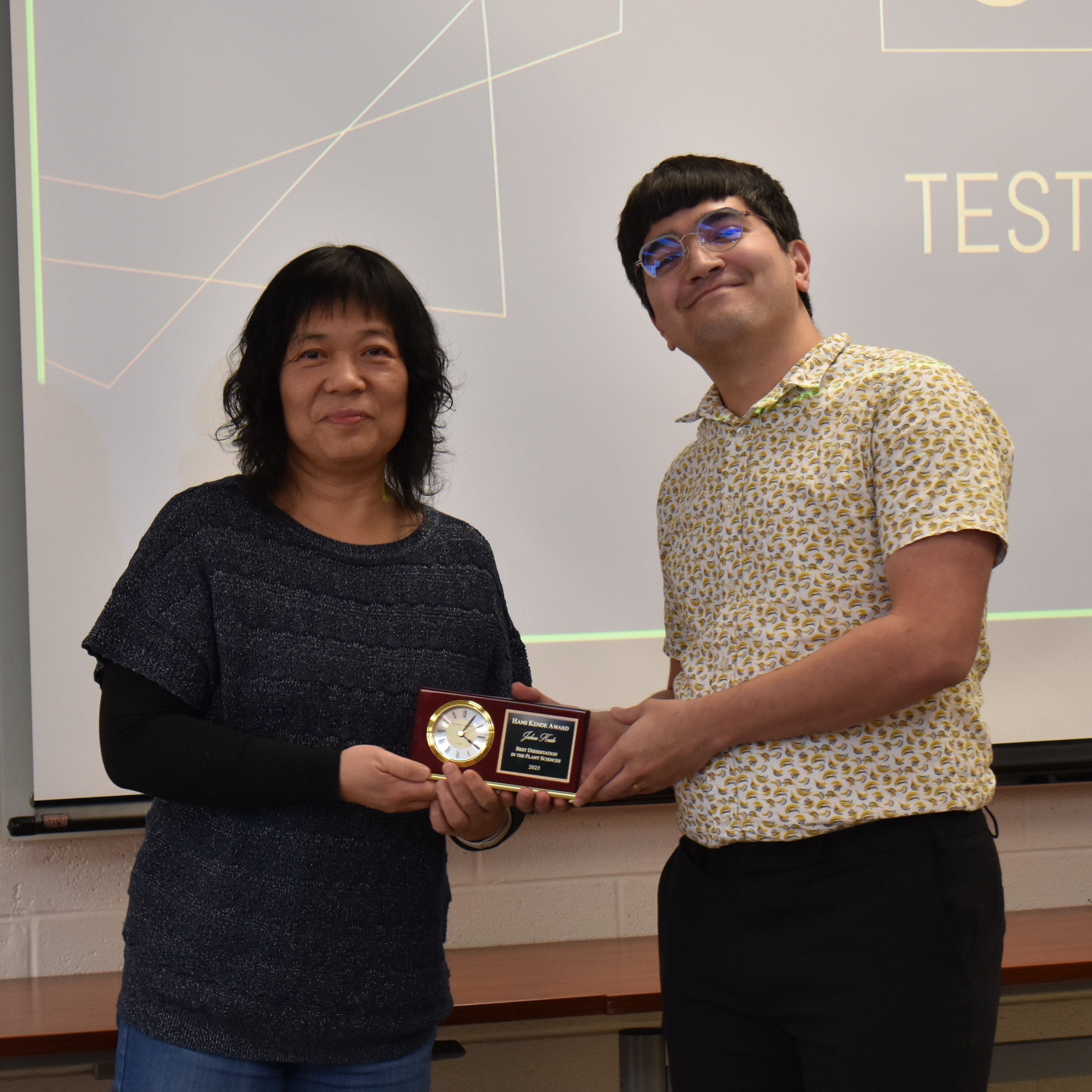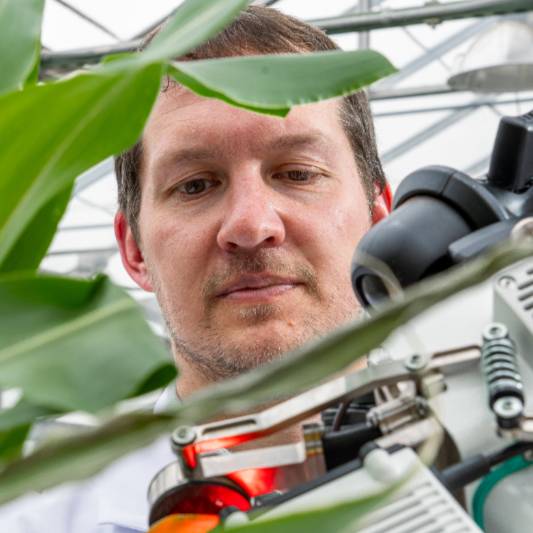NSF-funded project explores plant metabolism links to climate change, human nutrition
MSU-DOE Plant Research Laboratory plant biologist Berkley Walker is part of a team of scientists that is using a 3-year, $1.4 million National Science Foundation (NSF) Molecular and Cellular Biosciences award to explore the intersection between photorespiration and one-carbon metabolism, two plant biochemical processes that are critical to plant growth and human nutrition.
Photorespiration is a plant process that recycles toxic intermediates produced as a byproduct of photosynthesis and is an essential process needed by the plant to grow. Rates of photorespiration are linked to growing temperature and carbon dioxide concentration, meaning that future rates of photorespiration will change with changing climates. One-carbon metabolism is similarly vital to plant growth and is also the source for essential vitamins such as folate—its deficiency in humans is linked to serious health issues including neural tube defects and heart disease.
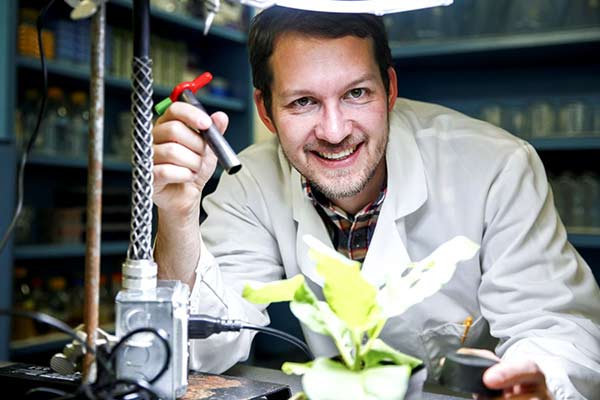
By Chelsea Mamott
Walker, the MSU principal investigator (PI) on the grant, is teaming up with PI Sanja Roje of Washington State University (WSU) to explore novel innovative physiological processes that allow plants to adapt to a variety of environmental conditions, resulting in more resilient crop varieties. Walker and Roje originally met in 2010 when Walker was a graduate student and Roje was a faculty member at WSU, but it wasn't until a chance encounter at last summer's annual American Society of Plant Biologists meeting that they realized their complementary expertise would be perfect to round out this proposal.
“This grant gives my lab the resources to look at a question that I have been chasing since I was a graduate student – does photorespiration really look like it does in a textbook, or does it do more for a plant than we currently realize?“ explained Walker, also an assistant professor in the Department of Plant Biology in the MSU College of Natural Science. “This avenue of research will help us better understand how plants will grow in future climates and how much these climates will effect important pathways for human nutrition.”
The two institutions have each been awarded a separate grant, with Walker’s portion amounting to $681,481. The goal of this project is to help generate models predicting how current and future climatic conditions influence plant performance and yields and inform breeding and engineering approaches to optimize plant productivity and the production of plant compounds important for human nutrition and health.
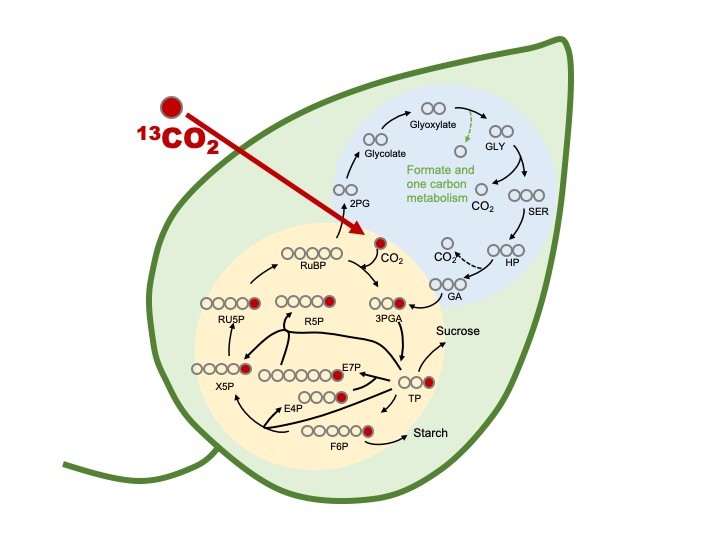
Graphic by Xinyu Fu
Walker, with his expertise in photorespiration will chart the course, or flux, of carbon from photorespiration to one-carbon metabolism. This approach combines gas exchange measurements with the use of isotopic tracers that are incorporated into central metabolism and can be measured using mass spectroscopic approaches. These measurements are then interpreted using a structural model of photorespiration and one-carbon metabolism to determine the connections between photorespiration and one-carbon metabolism.
Roje brings a deep understanding of one-carbon metabolism and a group of new mutant plants which have altered concentrations of metabolites shared between photorespiration and one-carbon metabolism. She will lead a deep metabolic characterization of these plants and provide them to Walker to determine exactly how metabolic flux has been altered.
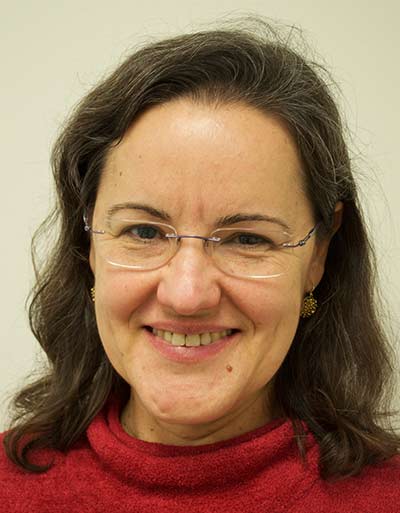
By Anne Mamott
It is expected that the findings will translate to other species, including four of the five most widely cultivated C3 food crops— rice, wheat, potatoes and soybean--because these pathways are conserved among higher plants.
“I’m looking forward to the opportunity to work on an exciting project that may make a meaningful contribution to society,” Roje said. “This project will advance the knowledge of how plants work and add a piece of the puzzle that may be needed in order to grow crops that are better suited to face a broader range of environmental conditions, are more nutrition and are more stress resistant. Also, Berkley has been a lot of fun to work with. He’s very enthusiastic and a good colleague, and that has been an extra bonus.”
In addition to the research, an important component of the project is to communicate the importance of basic plant science to groups that have not historically been exposed to fundamental research. This effort will be pursued through both research- and public-facing activities.
“Research-facing activities at MSU and WSU will include directly engaging these groups in the primary research and recruiting students from underrepresented groups into their laboratories,” said Berkley, who will engage with several MSU-specific programs to recruit undergraduate students into the lab, including the Michigan Louis Stokes Alliance for Minority Participation, the Summer Undergraduate Research Academy and the Leaders Encouraging Academic Development program.
The main public outreach activity of the project is a Sounds of Science concert series performance at WSU—a unique collaboration between plant scientists and musicians resulting in a TED-talk style event designed to increase awareness of the importance of plant science.
Sounds of Science started as an unfunded initiative by Walker when he was a postdoctoral researcher at the University of Illinois. With this support, Walker will be able to continue this collaboration with improved scope and production values at not only WSU, but eventually MSU as well.
“While there are a variety of pedagogical strategies employed to communicate and educate the public, music is especially powerful in increasing long-term memory and focus in a variety of contexts,” Walker said. “Additionally, much of the societal importance of plants integrates with the role of photorespiration in plant physiology as investigated in this project.”
Banner image: Berkley Walker (center) poses in the lab with (left to right) graduate student Luke Gregory, lab manager Audrey Johnson, and postdoctoral researchers Han Bao and Xinyu Fu. Photo by Victor Dirita Jr.
By Jeff Mason, Berkley Walker, Val Osowski
